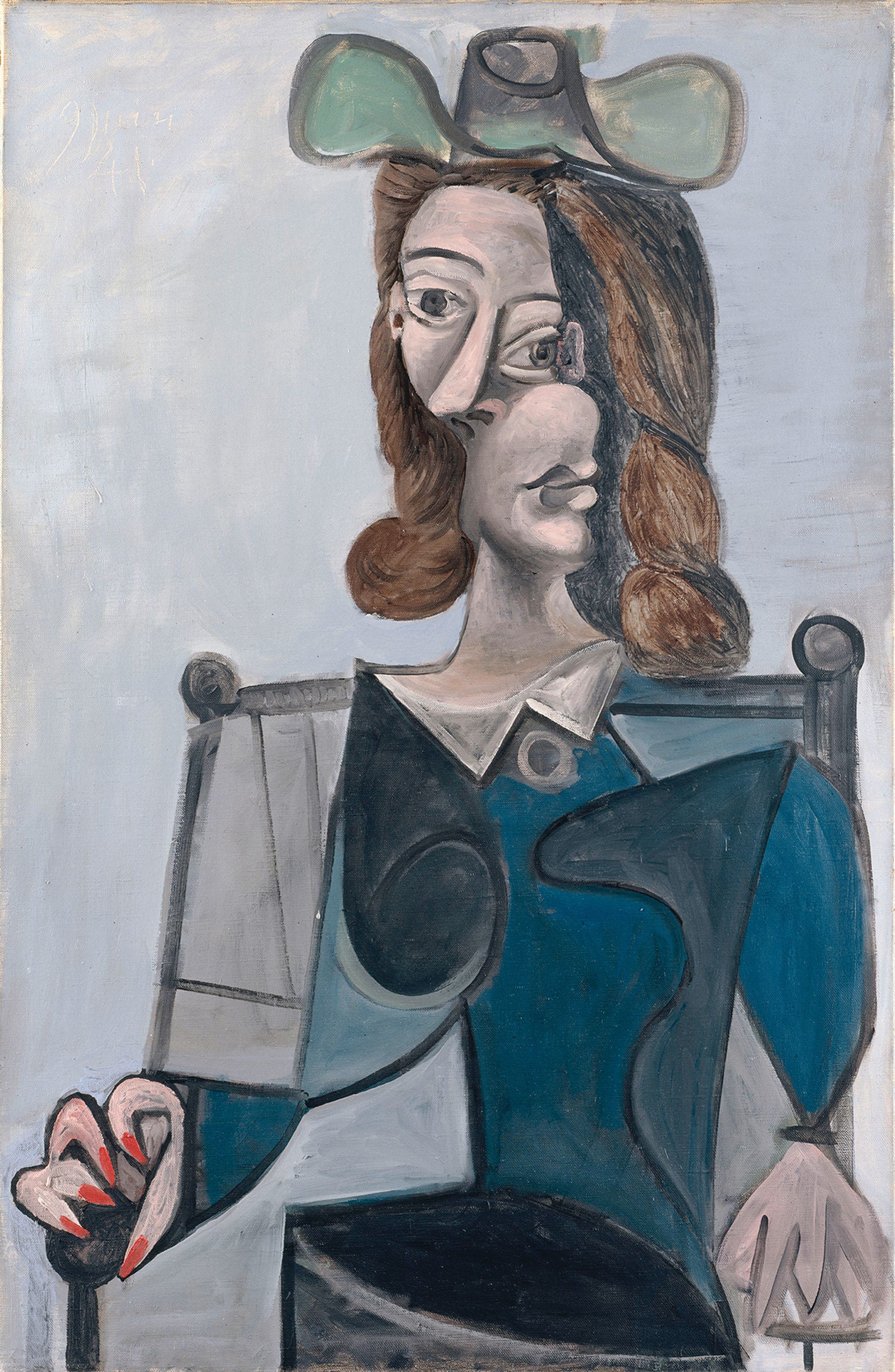When Pablo Picasso unveiled Les Demoiselles d’Avignon in his Paris studio in 1907, the painting was greeted by bafflement, anger and even laughter. The influential critic Félix Fénéon advised the 25-year-old artist to take up caricature. If the comparison rankled at the time, Picasso later conceded the point, declaring: “All good portraits are in some degree caricatures.”
Caricature is a thread that runs through Picasso Portraits, an exhibition of more than 80 works opening today at London’s National Portrait Gallery. “I’ve always felt that this strain in [Picasso’s] work has been seen too much as a sideline,” says Elizabeth Cowling, the show’s curator. “Not only was it something that he [did] all through his career, but the way that caricature uses abstraction, symbolism and grotesquery to bring out the essence of a person had a profound influence on his approach to portraiture generally.”
While modest in scale, the exhibition spans the eight decades of Picasso’s hyperactive working life, ranging from a tentative self-portrait created in 1896 when he was aged 14 or 15 to a skull-like sketch from 1972 (aged 90), made nine months before the Spanish artist’s death in 1973. Picasso learned the basics of academic portraiture from his father (also a painter), but he sharpened his drawing skills by imitating satirical cartoons from magazines.
“Drawing was always Picasso’s primary medium for thinking, planning, imagining and playing,” Cowling writes in the exhibition catalogue. She is borrowing a number of witty, scrappy works on paper from Barcelona’s Museu Picasso that have not been exhibited in the UK before. They include a comic strip-like series that narrates Picasso’s arrival as an ambitious Spanish immigrant in Paris in 1904, when he settled in the city, and a postcard sent to the poet Guillaume Apollinaire that jokingly states: “I never see you any more. Are you dead?”
Unlike traditional portraitists, Picasso rarely worked on commission. He preferred to depict his inner circle of friends and lovers “by heart”, from photographs and memory as well as from life. While his portraits covered all styles and media, they were increasingly dominated by women, starting with Fernande Olivier, his mistress during the early years of Cubism. “You can see the evolution of his art through his portraiture of her,” Cowling says.

The photographer Dora Maar, another of the artist’s mistresses, later called Picasso’s distorting portraits of her “lies”, saying: “They’re all Picassos, not one is Dora Maar.” But accusations of misogyny are misplaced, Cowling believes. The exhibition will “explore the way in which Picasso was choosing styles to suit the person,” she says.
Portraiture was also a way for Picasso to define his self-image. During the First World War, he posed for deadpan photographic self-portraits dressed variously in boxer shorts, a worker’s cap and a jacket, suit and tie. A sampling of these are on loan from private collections. His late works reveal a personal identification with his favourite Old Masters. The last painting in the show, Old Man Seated (1970-71), is a kind of “surrogate self-portrait”, Cowling says, in which Picasso fused self-portraits by Rembrandt and Van Gogh with an awareness of his own ageing. With his heroes as with his closest friends, he refused until the end to play it straight.
The exhibition is sponsored by the investment bank Goldman Sachs.
Picasso Portraits, National Portrait Gallery, until 5 February 2017; then at the Museu Picasso, Barcelona 16 March-25 June 2017

